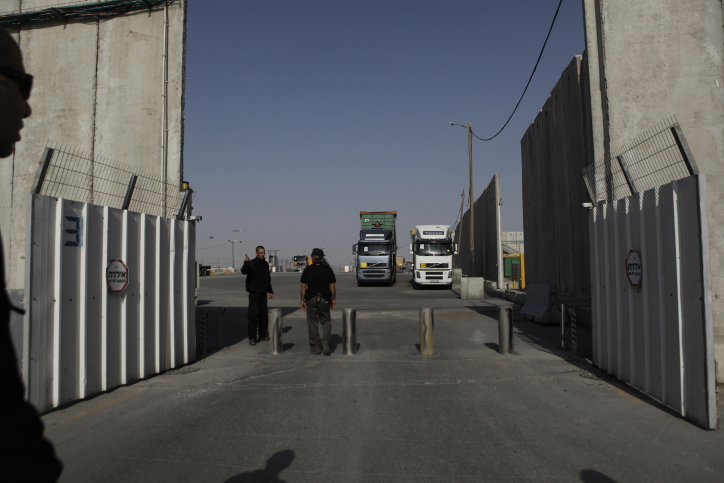
In conjunction with the Coronavirus outbreak in the Gaza Strip, and recording hundreds of infections and several deaths outside quarantine centers, the Israeli authorities continued its illegal and inhuman closure on the Gaza Strip for the 14th consecutive year. On 11 August 2020, the Israeli authorities partly closed the Karm Abu Salem (Kerem Shaloum) crossing, and only allowed the entry of humanitarian vital cases and fuel goods. On 12 August 2020, the Israeli occupation authorities banned the entry of fuel to the Gaza Strip in response to the “launching of the incendiary balloons and the violation of the israeli security calm.”
On 31 August 2020, the Israeli occupation authorities re-opened the Karm Abu Salem (Kerem Shaloum) crossing after the escalation between Israel and Hamas Movement was contained and a calm agreement was brokered under Qatari auspices. Nevertheless, Israel continued to control the entry and exit to and from the Gaza Strip at the Beit Hanoun “Erez” Crossing. Furhtrmore, Israeli authorities continued to impose restrictions on the entry of goods classified as “dual-use items” and continued to ban the Gaza Strip exports, except for very limited agricultural products, constituting only 3% of the total monthly Gaza exports before the closure. This enhanced the deterioration of economic, health and educational situation in addition to the infrastructure.
The tightened closure restrictions led to a catastrophic deterioration in humanitarian conditions in Gaza, which reflected poorly on the provision of basic services for at least 2 million Palestinians who live in poor living conditions in the Gaza Strip, which is classified as the most overpopulated area in the whole world. The Gaza population endured 20-hour power outage, aggrevating the water supply crisis as water supply was interrupted for long periods due to the electricity crisis, which was caused by the shutdown of Gaza’s only power plant after the Israeli occupation authorities banned the entry of fuel necessary for its operation[1].
Additionally, medical faicilities struggled to operate due to the electricity crisis, especially as they were already worn-thin before the outbreak of coronavirus in the the Gaza Strip with shortages in coronavirus testing kits, urgent need for intensive care units, respirators, and coronavirus diagnostic equipment, medicines, medical consumables and protective gear to prepare it to combat coronavirus. However, hospitals and medical centers currently suffer from a serious shortage of 45% of the essential drugs list, and 31% of medical consumables, and 65% of laboratory products and blood banking supplies.[2]
The economic sector also incurred huge losses due to the suspension of work in industrial, commercial and agricultural facilities that the mechanism of their productions depend on electricivity. For the 14th consecutive year, these facilities suffered from the Israeli restrictions on the entry of goods classified as “dual-use items.”[3] These items are issential for the civilian population, and the ban on their entry is a main factor in the deteriorating infrastructure, economic, health and education sectors.
Download the Report (PDF)
For more information about the deteriorating humanitarian and living conditions in the Gaza Strip, see the statement “Gaza Strip on Verge of Real Collapse Due to Coronavirus Outbreak and Ongoing Israeli Closure”, issued on 8/27/2020, at the website: https://www.pchrgaza.org/?p=14977
[2] – For more information about the deterioration of the health sector and medical facilities, see the statement “PCHR Warns of Health Sector Collapse and Suspension of Health Services in the Gaza Strip”, issued on 08/25/2020, at the website. https://www.pchrgaza.org/?p=14968
[3] – The occupying Israeli authorities claim that these materials, instead of being used for civilian purposes, can be used in developing the combat capabilities of the Palestinian resistance.